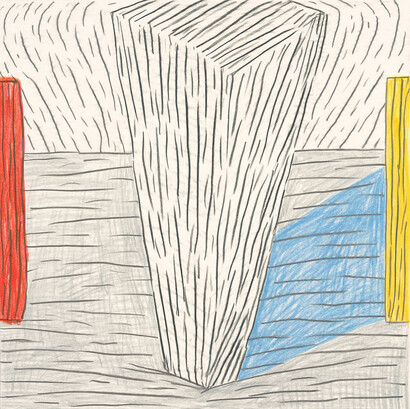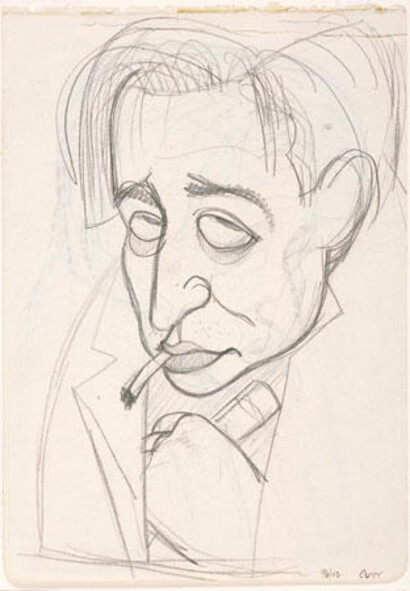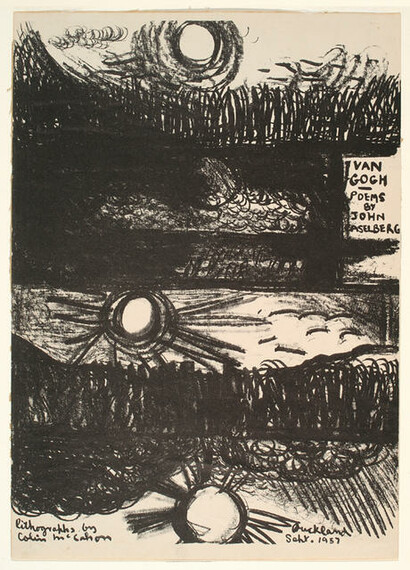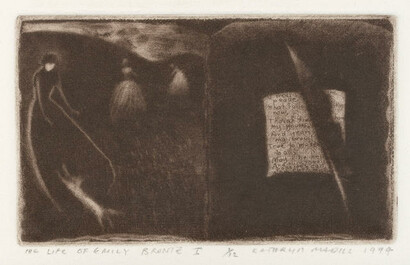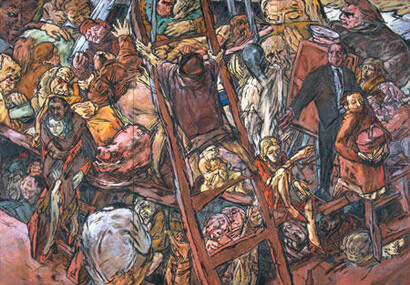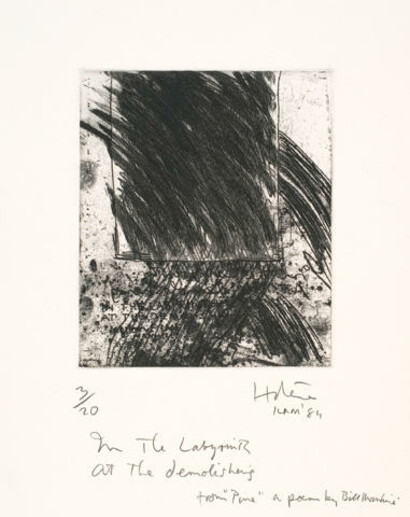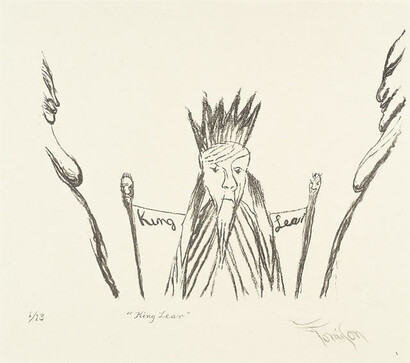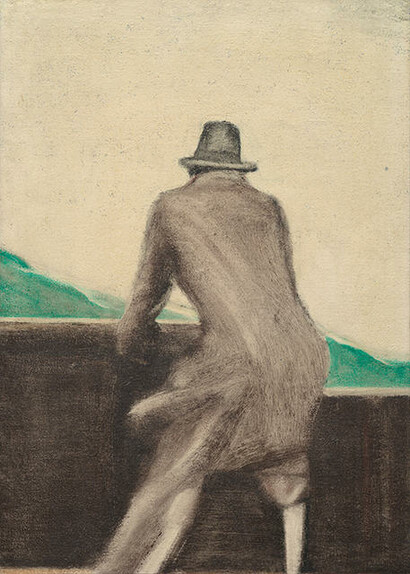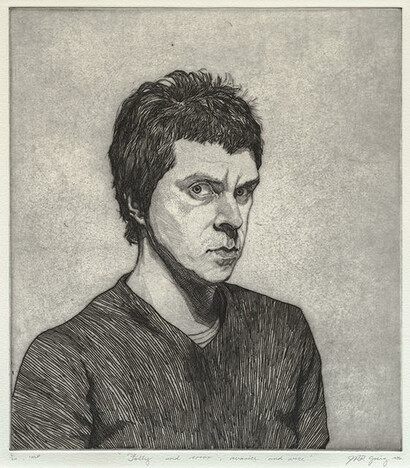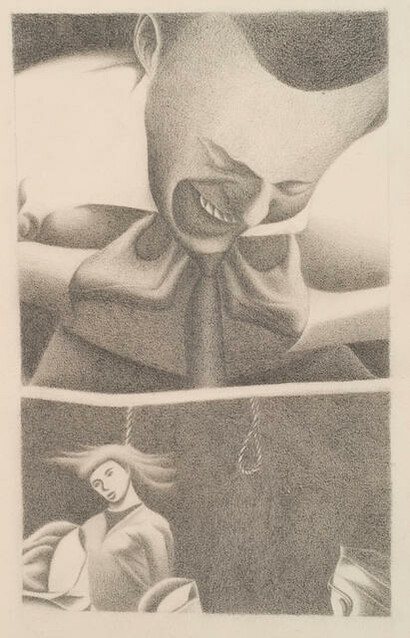This exhibition is now closed
Quotations
21 January –
12 March 2000
Exploring works from the McDougall's contemporary collection which have references to literary sources, this exhibition will include the work of Kathryn Madill, Tony Fomison and Ralph Hotere.
Exploring works from the McDougall's contemporary collection which have references to literary sources, this exhibition will include the work of Kathryn Madill, Tony Fomison and Ralph Hotere.
There has been an enduring history of association between text and image. Without a doubt, the bible remains the most heavily referenced text in visual art to date. Christian iconography formed the basis of the rejuvenation of the arts in the quattrocento with Italian artists like Giotto and Duccio receiving significant commissions for adornment in sacred spaces. The Pre-Raphaelite Brotherhood, which was a loosely formed British artists guild in the nineteenth century, mined literature of the day as subjects for their paintings. Dante Gabriel Rossetti's famous Ophelia refers to the tragic heroine of Shakespeare's King Lear and Lady of Shallot depicts the heroine from Lord Alfred Tennyson's poem of the same name. More recent examples closer to home of collaboration and collusion between writers and artists include Colin McCahon and the poet John Caselberg, and painter Ralph Hotere and Bill Manhire and Cilla McQueen.
This exhibition highlights the rich and diverse connections and influences between the written word and visual imagery. Life of Emily Bronte is part of a body of work which reveals Kathryn Madill's interest in the lives of the woman behind such famous works as 'Wuthering Heights.' Madill's delicate and intricate rendering of detail suggests a literal and metaphoric 'interior' and by focusing on the author and the subjective context of the work, as opposed to the modernist critique of the autonomous text, contributes to a wider feminist discourse.
Bill Manhire's concrete poem on French nuclear testing at Mururoa atoll formed the basis of Ralph Hotere's Dawn Water Poem (1986). Hotere adapted the formal arrangement of this poem and added the word 'Mururoa' to politicise what was originally a 'neutral' reflection on the natural world. This work reiterates the repetitive structure of Hotere's earlier Malady paintings but replaces the neat type-written lettering with roughly brushed script. With the intensive, explosive orange colour field and burning cross, Dawn Water Poem can be seen as both a celebration of life and an apocalpytic protest statement.
From the political to the mythical, Tony Fomison depicts a central character from Hermann Melville's Moby Dick in his painting, Captain Ahab, the Peg-Legged Hunter of the Great White Whale (1981). By portraying Ahab gazing out to sea over the ship's rails with his back to the viewer, Fomison highlights the psychological tension of the captain's bitter and lonely resolve to catch the whale who took his leg. Turning his back on the world of people, Ahab's sole focus is directed away from us. By excluding Moby Dick, the object of the captain's obsession, from the composition, Fomison reminds us that the struggle between the man and whale takes place, in reality, inside Ahab's own soul.
Belinda Jones
This exhibition was held at the Robert McDougall Contemporary Art Annex in the Arts Centre.
Exhibition number: 671

